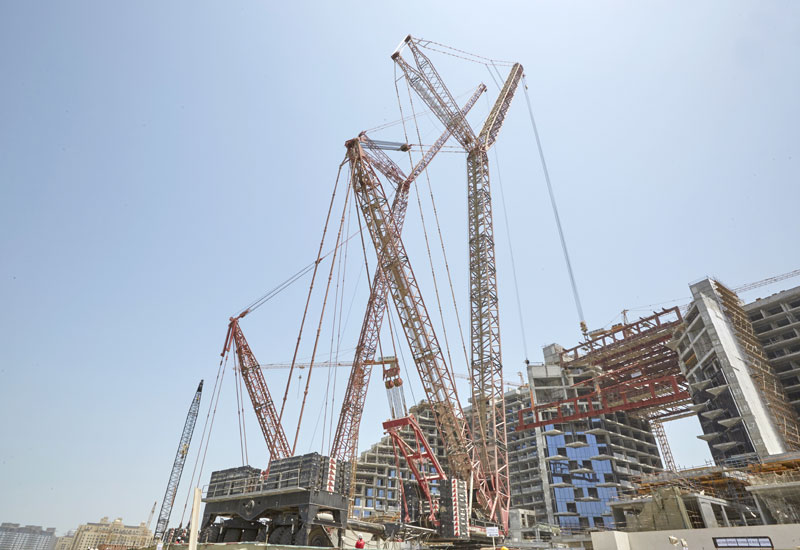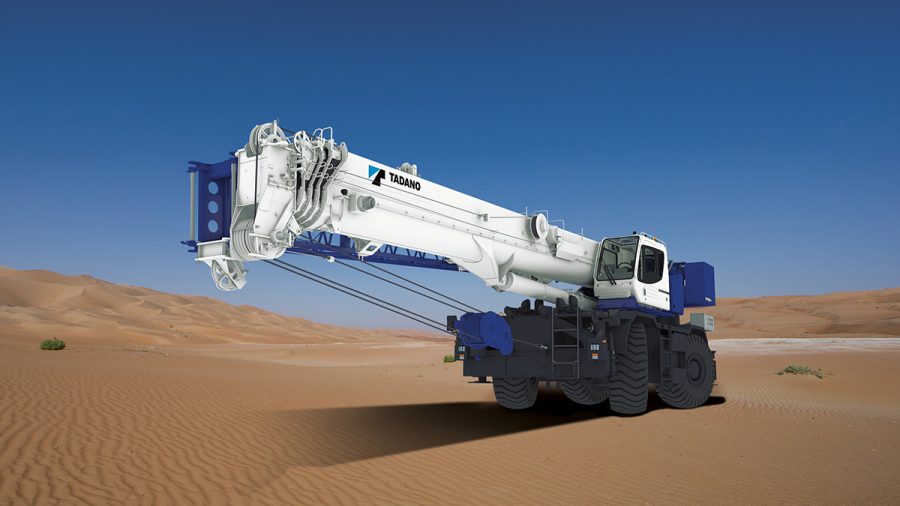Dubai’s rapid growth and ambitious construction projects often take place in challenging desert environments. Rough terrain cranes are crucial for these projects due to their ability to operate on uneven and rugged surfaces. However, using rough terrain cranes in Dubai’s desert presents unique challenges that require careful planning and specialized solutions. This article explores the key challenges of deploying rough terrain cranes in the desert and offers insights into how these challenges can be effectively managed.
Navigating Soft and Shifting Sands
One of the most significant challenges of using rough terrain cranes in Dubai’s desert is navigating soft and shifting sands. The desert landscape is characterized by loose, unstable ground that can make it difficult for cranes to maintain stability and traction.
Traction and Stability: Rough terrain cranes are designed with large, rubber tires and four-wheel drive capabilities to improve traction on uneven surfaces. However, soft sand can still pose a risk of sinking or slipping, potentially leading to equipment instability or tipping. To mitigate this risk, operators may need to use specialized tracks or mats to distribute the crane’s weight more evenly and provide a stable surface for operation.
Anchoring and Support: In some cases, additional anchoring and support systems may be necessary to secure the crane and prevent movement during lifting operations. This can include the use of ground anchors, stabilizers, or outriggers to enhance stability and ensure safe operation.

Dealing with Extreme Temperatures
Dubai’s desert environment is known for its extreme temperatures, which can reach over 50 degrees Celsius (122 degrees Fahrenheit) during the summer months. These high temperatures can have several adverse effects on rough terrain cranes and their operation.
Equipment Performance: Extreme heat can affect the performance and longevity of crane components, including engines, hydraulics, and electrical systems. Overheating can lead to equipment failure, increased wear and tear, and reduced efficiency. To address this, cranes may need to be equipped with enhanced cooling systems, heat-resistant materials, and regular maintenance to ensure optimal performance in high temperatures.
Operator Safety: The safety and well-being of crane operators are also a concern in extreme heat. Prolonged exposure to high temperatures can lead to heat exhaustion, dehydration, and other heat-related illnesses. Employers must implement measures to protect operators, such as providing adequate hydration, cooling systems in operator cabins, and scheduling work during cooler parts of the day.
Wind and Sandstorms
Wind and sandstorms are common in desert environments and can pose significant challenges for rough terrain cranes operations. Strong winds can affect the stability of cranes, while sandstorms can reduce visibility and cause damage to equipment.
Wind Stability: Rough terrain cranes must be able to withstand strong winds without compromising stability. Operators need to monitor wind conditions closely and adhere to safe operating limits to prevent accidents. In some cases, operations may need to be suspended during high winds to ensure safety.
Sand Intrusion: Sandstorms can cause fine sand particles to infiltrate crane components, leading to increased wear and tear, clogging, and potential damage. To mitigate this, cranes should be equipped with protective covers, filters, and seals to prevent sand intrusion. Regular cleaning and maintenance are also essential to remove sand buildup and maintain equipment performance.
Limited Infrastructure and Accessibility
Construction projects in Dubai’s desert often take place in remote areas with limited infrastructure and accessibility. This presents logistical challenges for transporting and deploying rough terrain cranes.
Transportation Logistics: Transporting rough terrain cranes to remote desert sites can be challenging due to the lack of developed roads and infrastructure. Specialized transport vehicles and routes may be needed to navigate the rough terrain and ensure safe delivery of the cranes. Detailed planning and coordination with local authorities are essential to manage transportation logistics effectively.
Site Preparation: Preparing a desert site for crane operations can be more complex than in urban environments. This may involve leveling the ground, removing obstacles, and establishing access routes. Adequate site preparation is crucial to ensure that the crane can operate safely and efficiently once deployed.
Maintenance and Reliability
Maintaining rough terrain cranes in the harsh desert environment is critical to ensuring their reliability and longevity. The extreme conditions can accelerate wear and tear on equipment, making regular maintenance and monitoring essential.
Preventive Maintenance: Implementing a rigorous preventive maintenance schedule is vital to keep cranes in optimal condition. This includes regular inspections, lubrication, and replacement of worn or damaged components. Preventive maintenance helps identify and address potential issues before they lead to equipment failure.
Remote Monitoring: Advanced telematics and remote monitoring systems can enhance maintenance efforts by providing real-time data on crane performance and condition. These systems can track key parameters such as engine temperature, hydraulic pressure, and component wear, allowing for proactive maintenance and timely interventions.

Environmental and Regulatory Compliance
Operating rough terrain cranes in Dubai’s desert also involves adhering to environmental and regulatory requirements. Ensuring compliance with these standards is crucial to minimize the environmental impact and avoid legal issues.
Emission Standards: Dubai has stringent emission standards to control air pollution from construction equipment. Rough terrain cranes must be equipped with engines that meet these standards to reduce emissions and minimize their environmental impact. Regular emissions testing and maintenance are necessary to ensure compliance.
Noise Control: Noise pollution is another concern in desert construction projects. Cranes should be equipped with noise-reduction technologies and operated within permissible noise levels to minimize disturbances to the surrounding environment and comply with local regulations.
Training and Competence
Operating rough terrain cranes in Dubai’s desert environment requires specialized skills and knowledge. Ensuring that operators are adequately trained and competent is essential for safe and efficient crane operations.
Operator Training: Comprehensive training programs should be provided to crane operators, covering topics such as equipment operation, safety protocols, and emergency procedures. Training should also address the specific challenges of operating in desert conditions, including navigating soft sand, managing extreme temperatures, and responding to wind and sandstorms.
Certification and Compliance: Operators must be certified to operate rough terrain cranes in Dubai, in accordance with local regulations and industry standards. Regular assessments and refresher training should be conducted to maintain operator competence and ensure compliance with regulatory requirements.

Technological Innovations
Technological advancements are continuously improving the capabilities and performance of rough terrain cranes, making them better suited to operate in challenging environments like Dubai’s desert.
Advanced Cooling Systems: To address the issue of extreme temperatures, modern rough terrain cranes are equipped with advanced cooling systems that prevent overheating and ensure consistent performance. These systems include enhanced radiators, intercoolers, and thermal management technologies.
Telematics and Automation: Telematics and automation technologies enhance the efficiency and safety of rough terrain crane operations. Telematics systems provide real-time data on equipment performance, enabling remote monitoring and predictive maintenance. Automation features, such as remote control and autonomous operation, reduce the need for manual intervention and improve operational precision.
Conclusion
Using rough terrain cranes in Dubai’s desert environment presents a range of challenges, from navigating soft sands and dealing with extreme temperatures to managing wind and sandstorms and ensuring compliance with environmental and regulatory standards. Addressing these challenges requires careful planning, specialized equipment, and comprehensive training for operators. By leveraging technological innovations and adhering to best practices, construction companies can effectively deploy rough terrain cranes in the desert, contributing to the successful completion of ambitious projects in Dubai.
For more information on regulatory requirements and best practices for crane operations in Dubai, visit the Dubai Municipality and Roads and Transport Authority websites.

Baseball fan, maker, hiphop head, vintage furniture lover and collaborator. Acting at the fulcrum of aesthetics and function to create great work for living breathing human beings. Check me out on Dribbble or Medium.



